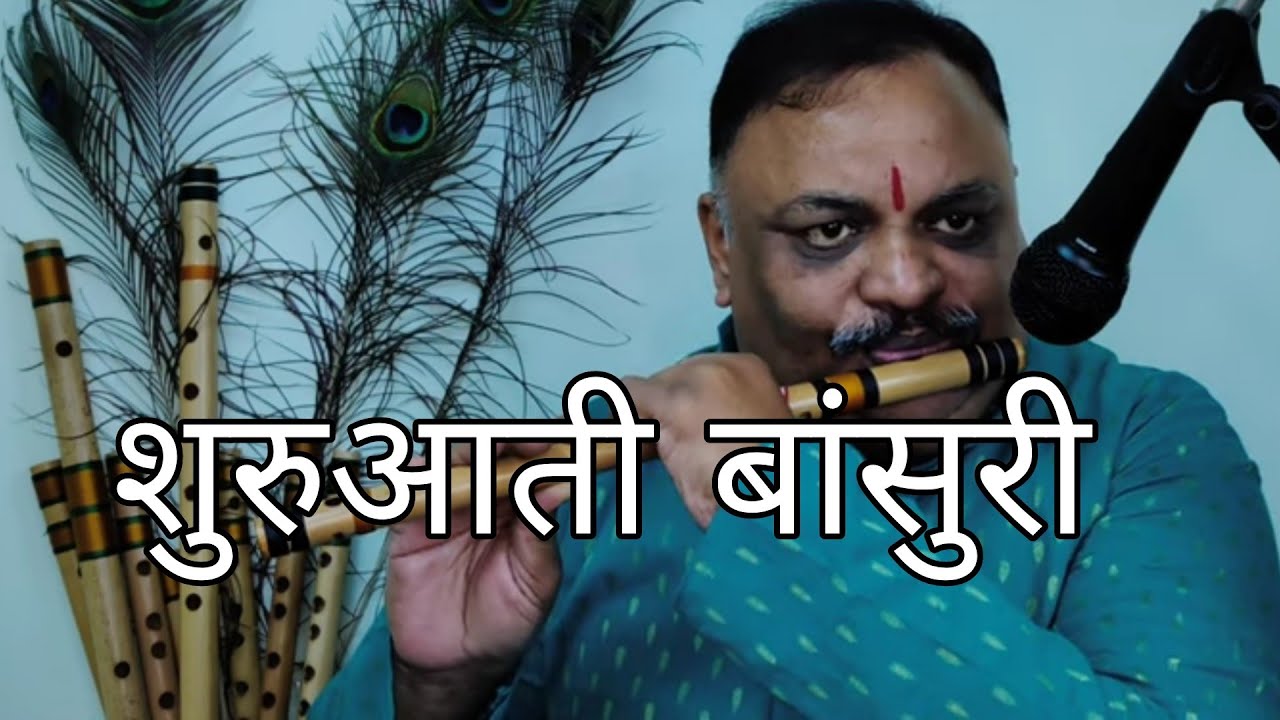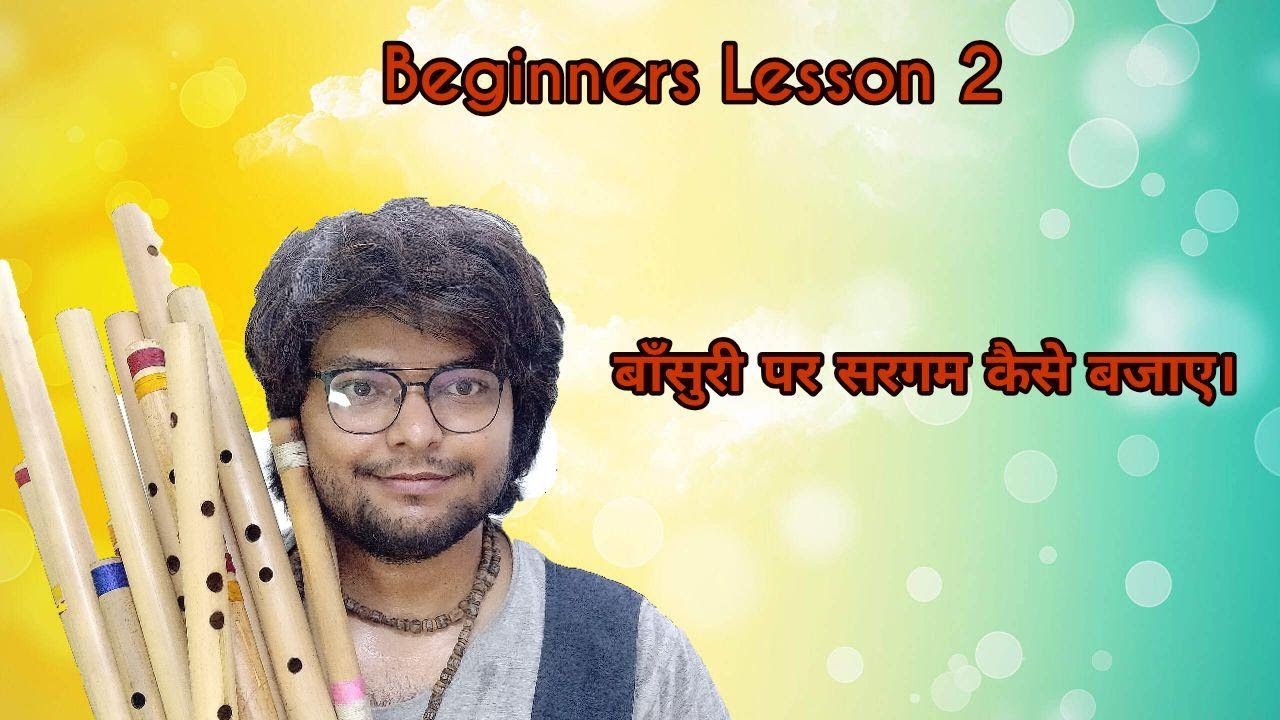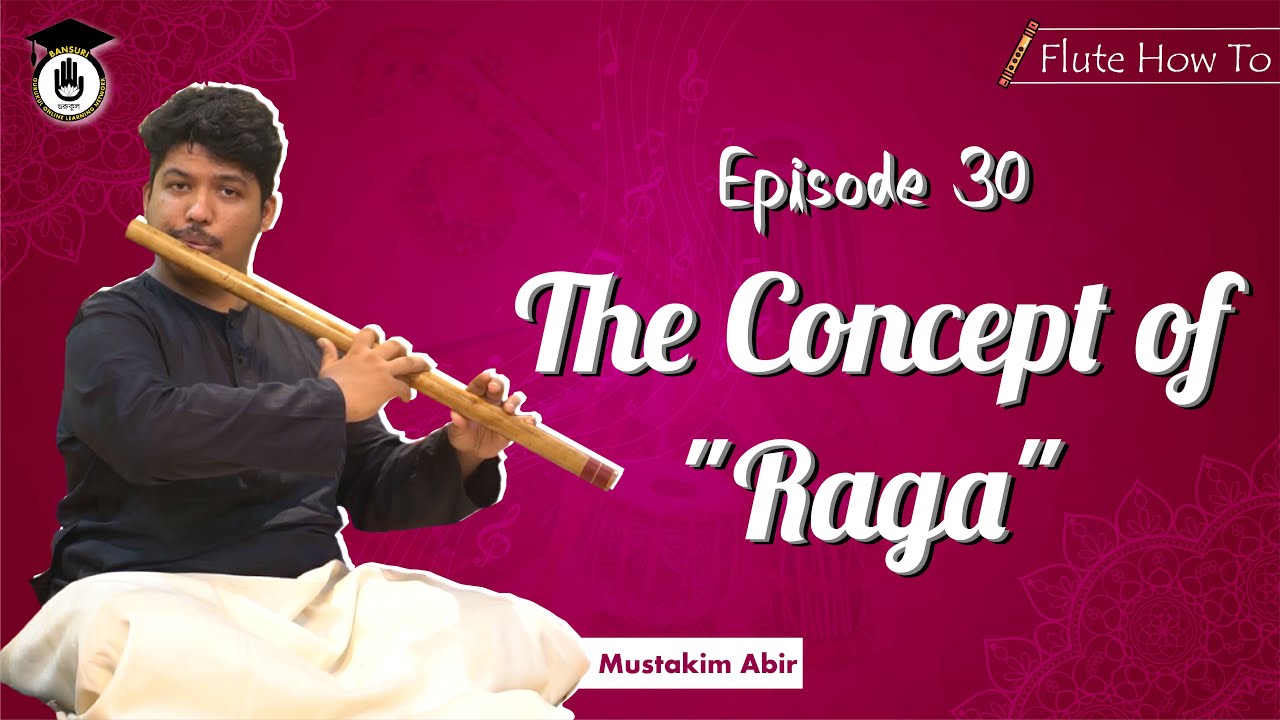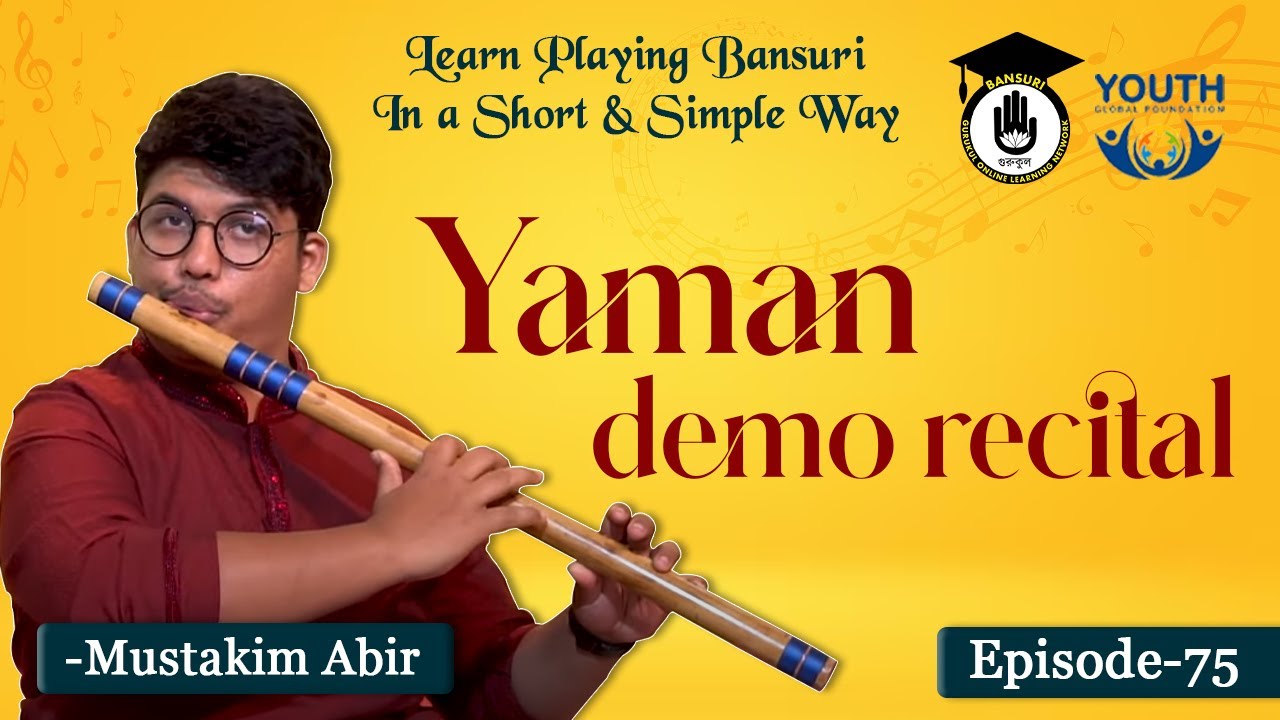If you’ve ever been enchanted by the melodious sounds of Indian classical music, chances are you’ve heard the beautiful bansuri. This traditional bamboo flute is not just an instrument; it’s a gateway to a deep musical experience. In this post, we'll explore the wonders of the bansuri and guide you on how to get started with some fantastic video tutorials available on Dailymotion.
Introduction to the Bansuri

The bansuri is more than just an instrument; it’s a symbol of cultural heritage and artistic expression in Indian music. Made from bamboo, this flute has a rich, warm tone that can evoke a range of emotions—from the calm of a serene evening to the excitement of a festive celebration.
Traditionally, bansuris come in various sizes, usually between 3 to 4 feet long, with six or seven finger holes that the player uses to create different notes. The pitch is determined by the length of the flute: a longer bansuri produces lower notes, while a shorter one offers higher pitches.
Many are drawn to the beautiful sound of the bansuri because it resonates deeply with spiritual and cultural significance. In Indian mythology, for instance, the bansuri is closely associated with Lord Krishna, who is often depicted playing this enchanting instrument. Whether you’re a beginner or someone with musical background, learning the bansuri can be an incredibly rewarding endeavor.
If you’re curious about how to play, you’re in luck! Thanks to technology, gaining the skills to play the bansuri is more accessible than ever. Dailymotion hosts a variety of step-by-step video tutorials that can help you grasp the fundamentals of playing this amazing instrument. From understanding how to hold the bansuri to learning your first melody, these videos can guide you every step of the way.
Also Read This: Complete Guide to Skipping Ads on Dailymotion for a Better Viewing Experience
Benefits of Learning the Bansuri

Deciding to learn the bansuri is not just about picking up a musical instrument; it comes with a plethora of benefits that enrich your life. Let’s chat about some of these benefits and why you should embark on this musical journey.
- Cognitive Development: Learning music improves brain function, enhancing your memory, attention, and problem-solving skills. Playing the bansuri requires cognitive coordination as you read music, think about finger placement, and listen to notes simultaneously.
- Emotional Expression: Music is a powerful form of expression. Playing the bansuri allows you to convey your emotions and feelings, offering an outlet for creativity and self-expression. Whether you're joyful or feeling down, the bansuri can be a companion that resonates with your mood.
- Stress Relief: Playing music, including the bansuri, can be a form of meditation. Many players find that immersing themselves in music helps reduce anxiety and stress. The gentle, soothing sounds can transport you to a peaceful state, away from the hustle and bustle of everyday life.
- Community and Connection: Music brings people together. By learning to play the bansuri, you open up opportunities to connect with other musicians, whether it’s through joining a community of players, participating in workshops, or playing in ensembles. This social element fosters camaraderie and shared experiences.
- Cultural Appreciation: Understanding the history and cultural significance of the bansuri allows you to appreciate Indian music at a deeper level. The more you learn, the more you can appreciate the complexities and beauty of traditional Indian melodies and rhythms.
In summary, learning the bansuri is a journey worth taking. Not only does it enhance various cognitive and emotional abilities, but it also connects you with a rich cultural heritage. So why not grab a bansuri and start your adventure? With the step-by-step video tutorials on Dailymotion, you’ll find everything you need to embark on this beautiful path of musical exploration!
Also Read This: Exploring the Journey of A Very Merry Christmas with the Kardashians on Dailymotion
3. Essential Equipment for Playing the Bansuri

Before diving into the beautiful world of the bansuri, it’s crucial to understand the essential equipment you’ll need. Unlike many musical instruments that can be quite complex, the bansuri has a relatively simple setup. Here’s a quick overview of what you’ll need to get started:
- The Bansuri: Of course, the most critical piece of equipment is your bansuri itself! These bamboo flutes come in various sizes and keys. As a beginner, you might want to choose a medium-sized bansuri in the key of C or D, as these are easier to handle and play.
- Cleaning Cloth: Keeping your bansuri clean is vital for maintaining sound quality. A simple cotton cloth will do wonders in removing moisture after each play session.
- Metronome: This tool will help you develop a sense of timing and rhythm. You can find metronome apps for your smartphone, which are very handy and user-friendly.
- Tuner: As with any wind instrument, tuning is essential. A clip-on tuner or a tuning app will ensure your bansuri stays in perfect pitch.
- Sheet Music or Instructional Material: Whether you prefer digital resources or physical books, having access to beginner-friendly sheet music will significantly aid your practice sessions.
Investing in good quality equipment can make your learning journey much more enjoyable. Try not to go for the cheapest option available; sometimes, a slightly higher price can mean significantly better sound quality and comfort.
Lastly, remember that while having the right tools is important, the most valuable part of your equipment is your passion and dedication to mastering the bansuri!
Also Read This: Dailymotion’s Guide to Losing Belly Fat with Quick and Easy Exercises
4. Getting Started: Basic Techniques

Now that you have your bansuri and essential equipment, it’s time to get started! Learning the basic techniques is crucial for developing your skills and playing beautiful music. Here are some fundamental tips to help you begin:
- Posture: Start by sitting or standing comfortably. Hold the bansuri horizontally in front of you. Keep your back straight, and hold the flute gently but firmly. Your fingers should be relaxed and ready to move.
- Finger Placement: The bansuri has six holes, and proper finger placement is key. Make sure your fingers cover the holes completely to produce clear notes. You can practice by playing single notes first, focusing on clean sounds.
- Breath Control: Controlling your breath is crucial when playing the bansuri. Start by taking a deep breath and exhaling slowly into the flute. Practice producing sound by gently blowing across the opening. Adjust your breath strength to achieve different volumes.
- Embouchure: This refers to how you shape your lips while playing. Experiment with your lip position until you find a comfortable way to create a good tone. A common start is to keep your lips relaxed and slightly pursed for the best sound.
- Scales Practice: Once you’re comfortable producing single notes, begin practicing scales. The major scale is an excellent place to start as it helps you familiarize yourself with the instrument's layout while building finger coordination.
Don’t be disheartened if you don’t sound perfect right away; every musician starts from the basics! Dedicate a few minutes each day to practice these techniques. Consistency is key, and as you progress, you’ll find that the joyful sounds of the bansuri will become more natural and effortless.
Embrace this journey, have fun with your practice, and remember to check out the step-by-step video tutorials on Dailymotion for visual guidance. Your bansuri adventure has just begun!
Also Read This: How to Explore Cultural and Historical Documentaries Through Dailymotion’s Library
5. Step-by-Step Video Tutorials on Dailymotion
If you're eager to learn the bansuri, you're in luck! Dailymotion is a treasure trove of step-by-step video tutorials that cater to beginners as well as seasoned players looking to refine their skills. The visual and auditory components of video learning provide a unique advantage that books or written guides simply can't match. Here’s why you should explore these resources:
- Visual Learning: Watching an experienced player demonstrate techniques can make it easier to grasp concepts that might be tricky to understand through text alone.
- Real-Time Feedback: Many tutorials offer real-time demonstrations, allowing you to see how exact finger placements and breath control affect sound.
- Diverse Styles: You'll find a variety of teaching styles, from traditional Indian classical music to contemporary expressions. This diversity can inspire your personal style!
To get started, simply search for “Bansuri tutorials” on Dailymotion. You’ll come across channels dedicated to bansuri playing, where experienced instructors provide comprehensive lessons on everything from holding the flute to advanced techniques.
Here’s a simple roadmap to make the most of these tutorials:
- Start with the Basics: Look for beginner videos that cover the instrument's anatomy, how to hold it, and fundamental techniques like producing your first notes.
- Practice Along: Take your time! Use these tutorials to play along. Pause and rewind as necessary to master each section before moving on.
- Experiment: As you become comfortable with the basics, start exploring different styles and incorporating them into your practice. Dailymotion has a wealth of creativity waiting for you!
Don't forget to engage with the community! Many content creators encourage viewers to leave comments or questions. This interaction can enhance your learning experience, and you might even find tips from fellow enthusiasts.
Also Read This: How to Download Dailymotion Videos on Chromebook: A Simple and Effective Guide
6. Advanced Techniques and Practices
Once you’ve established a foundation with the bansuri, it’s time to dive into some advanced techniques and practices that can elevate your playing. Mastering these techniques not only enhances your skill set but also opens up a world of musical creativity. Here are some key areas to explore:
- Vibrato: This technique involves varying your pitch slightly to create a rich, expressive sound. It can add an emotional depth to your music. Practice by holding a note and gently oscillating your finger or modulating your breath.
- Ornamentation: Adding embellishments like grace notes can bring flavors of traditional Indian classical music into your playing. Techniques like meend (sliding between notes) and gamak (ornamental bends) are integral to enhance the expressiveness of your music.
- Breath Control: Advanced players need to master breath control to perform intricate passages smoothly. Practice breathing exercises regularly to build lung capacity and ensure a steadier airflow while playing.
One of the best ways to learn these advanced techniques is through a mix of personal practice and guided learning. Here are some practical strategies:
- Regular Practice: Set aside dedicated time each day to work specifically on advanced techniques. Consistency is key!
- Record Yourself: Occasionally recording your practice sessions can help you pinpoint areas for improvement and track your progress over time.
- Seek Feedback: Getting constructive criticism from instructors or fellow musicians can provide insights you might not realize on your own.
Remember, becoming proficient with advanced bansuri techniques takes time and patience, but the joy of creating beautiful music is well worth the effort. So, pick up your bansuri, find some engaging tutorials, and let your musical journey unfold!
Also Read This: How to Make Barbie Hairstyles: Creative Hair Tutorials on Dailymotion
7. Common Challenges and How to Overcome Them
Learning to play the bansuri, or Indian bamboo flute, can be a rewarding yet challenging experience. Like any musical instrument, you may encounter a few obstacles along the way. Let’s dive into some common challenges faced by beginners and share tips on how to overcome them!
1. Difficulty in Producing Clear Notes
One of the first hurdles you might face is achieving a clean and clear sound. This often happens due to improper finger placement or breath control. Here’s how to tackle this:
- Check Your Finger Placement: Ensure your fingers are covering the holes completely. Even a tiny gap can lead to a squeaky sound.
- Practice Breathing Techniques: Controlled breathing is critical. Try inhaling deeply and exhaling steadily through the flute.
2. Fingering Issues
As you progress, you might struggle with fingering different notes quickly. This can be frustrating but practice is key. What can you do?
- Slow Practice: Start slowly. Play each note thoroughly before trying to speed up. Your muscle memory will improve over time.
- Use Scale Exercises: Practicing scales can help familiarize your fingers with the layout of the flute.
3. Difficulty Keeping Rhythm
Maintaining rhythm is essential for musicality. If you find yourself lagging or rushing when playing, here are some strategies:
- Use a Metronome: Playing along with a metronome can help you develop a consistent tempo.
- Practice with Backing Tracks: Playing along with songs or backing tracks can help you stay in time.
4. Tuning Issues
If your bansuri isn’t in tune, it can be discouraging. Here are some tips to tune your instrument:
- Invest in a Tuner: A digital tuner can help you easily identify whether your bansuri is in tune.
- Compare with Other Instruments: Try to play alongside a piano or a digital keyboard to adjust your tuning.
Remember, every musician faces challenges at some point. Being patient and persistent is key! And don’t hesitate to refer to the step-by-step video tutorials on Dailymotion. They provide visual guidance that can help alleviate many of these challenges.
8. Conclusion and Next Steps in Your Bansuri Journey
Congratulations on taking the first steps into the enchanting world of the bansuri! By now, you’ve discovered the joys and challenges of playing this beautiful instrument. As you wrap up this initial phase of learning, you might be wondering, “What’s next?” Let’s explore some options to continue your journey.
Practice, Practice, Practice
There’s no substitute for regular practice. Set aside time each day to work on your technique, play along with songs, or explore new pieces. Consistency is crucial, so even if it's just 15 minutes a day, make it a habit!
Explore Different Styles
The bansuri can be played in various styles ranging from classical to contemporary. As you get comfortable with basic melodies, consider experimenting with:
- Hindustani Classical Music: Dive into the rich tradition of ragas.
- Folk Tunes: Explore regional folk music that often features the bansuri.
- Cross-Genre Collaborations: Try blending the bansuri with other genres like jazz or pop.
Join a Community
Connecting with other bansuri enthusiasts can be inspiring. Look for local music groups, online forums, or social media communities. Sharing your experiences and learning from others can profoundly influence your growth.
Consider Professional Lessons
If you’re serious about mastering the bansuri, consider taking lessons from a qualified teacher. Personalized feedback can accelerate your learning and help correct any bad habits early on.
In conclusion, your journey with the bansuri is just beginning. Remember, every expert was once a beginner. Keep exploring, practicing, and most importantly, enjoying the magical sound of your bansuri!
 admin
admin








